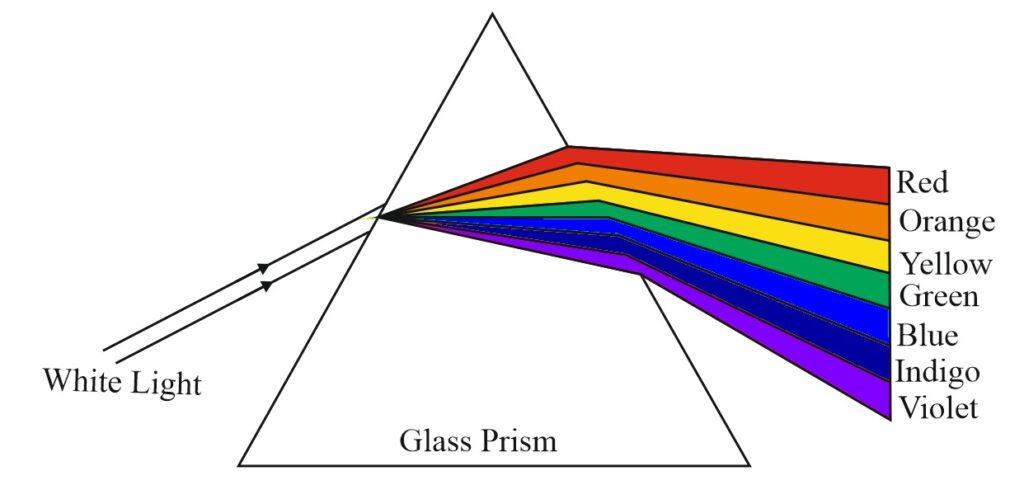When choosing lighting equipment, apart from brightness and Color temperature, another extremely important but less intuitive indicator is the Color Rendering Index (CRI for short). It directly affects how we perceive the color of objects and is related to the quality of lighting and visual experience. This article will take you on a deep dive into the concept of color rendering index, its measurement methods, and its application significance in LED lighting.

What is the color rendering index?
The color rendering index is an indicator that measures the color rendering ability of a light source and is used to evaluate the authenticity of the light source’s reproduction of object colors. Its numerical range is from 0 to 100, with the highest value of 100 indicating that the light source can perfectly reproduce the true color of objects, similar to natural light or standard light sources.
For instance, if the color rendering index of a light source is above 90, it usually indicates that the colors of the objects seen under this light source are very close to their colors under natural light. However, light sources with a lower color rendering index may cause colors to appear distorted, dull or off-color.
The measurement method of the color rendering index
The measurement of the color rendering index is based on a set of standard color templates. During the test, place these color samples respectively under the light source to be tested and the reference light source (such as a blackbody radiation source or daylight), compare their color differences, calculate the average value of the color difference, and then convert it into a CRI value.
The specific measurement steps include:
Select 8 standard test color templates (R1 to R8) to cover the common color range.
Observe these color samples under the light source to be tested and the reference light source.
Calculate the color difference of a color under two light sources.
Calculate the color rendering index based on the size of the color difference.
In addition, there are extended test color templates (such as R9, representing bright red), which are used to evaluate the light source’s ability to reproduce special colors, especially in the professional lighting field.
The practical significance of the color rendering index
Enhance visual comfort
A light source with a high color rendering index can more accurately reflect the color of objects, making the human eye feel natural and comfortable and reducing visual fatigue.
Affect color judgment
In scenarios where accurate color judgment is required, such as clothing stores, beauty salons, art galleries, and medical diagnosis, high CRI light sources are particularly important.
Enhance the aesthetic appeal of the environment
A brightly colored and realistic lighting environment can enhance the beauty and appeal of a space and improve the overall atmosphere.
Promote work efficiency
For industries such as industrial manufacturing, design, and quality inspection, accurate color reproduction helps to enhance work quality and efficiency.
LED lighting and color rendering index
Compared with traditional light sources, LED lamps have seen a significant improvement in color rendering performance. Modern LED technology can achieve high CRI values by adjusting the chip ratio and packaging materials, meeting various application requirements.
High CRI LED lamps:
Some high-end LED lamps have a CRI of over 95, which can reproduce the colors of objects very realistically and are suitable for high-demand commercial and professional places.
The balance between CRI and light efficiency:
When designing LED lamps, it is usually necessary to strike a balance between luminous efficacy (energy conservation) and color rendering. LED lights with high CRI may have slightly lower luminous efficiency, but they offer better visual effects.
Special light color requirements:
For certain specific applications, such as medical lighting and jewelry display, LED light sources with high CRI and special performance for certain colors (such as red R9) are required.
The limitations and Development of the color rendering index
Although CRI is widely used, it also has some limitations:
The test color is limited
CRI is mainly based on eight test colors and cannot fully cover the restoration of all colors. Insufficient sensitivity to certain colors. Especially for bright red (R9) and other saturated colors, the performance of CRI is not comprehensive enough.
Therefore, other evaluation indicators have emerged in the industry, such as the TM-30 color evaluation system, which provides more detailed color reproduction analysis.
How to choose the right CRI lamps?
Home lighting
Generally, lamps with a CRI80 or higher quality are sufficient to ensure natural colors in daily life.
Business and office environments
It is recommended to have a CRI90 or above to enhance the color authenticity of product display and the working environment.
Professional field
For medical, beauty and art exhibitions, it is recommended to choose high color rendering lamps with a CRI95 or above to ensure accurate color reproduction.
Which lighting devices use CRI?
Almost all modern lighting equipment specifications will indicate the color rendering Index (CRI). The higher the CRI value, the stronger the light source’s ability to reproduce the color of objects. Not all devices directly highlight the CRI value on the product packaging or instruction manual, but manufacturers usually provide this information on the product specification sheet or website.
The following are some common types of lighting equipment, and their specifications usually include CRI values:
LED bulbs: Various types of LED bulbs, including alternatives to incandescent bulbs, downlights, spotlights, panel lights, etc., will all be marked with the CRI value. This is because LED technology enables more precise control of the spectrum, thereby achieving a higher CRI value.
LED light strips: LED light strips used for decorative lighting or cabinet lighting also usually provide CRI information, especially in applications that require accurate color reproduction.
Commercial lighting: The commercial lighting systems used in shopping malls, offices, museums and other places usually pay special attention to CRI to ensure that the colors of goods or exhibits are accurately presented. This includes various types of commercial lighting fixtures, such as track lights, floodlights, spotlights, etc.
Professional lighting: Professional fields such as studios, film production, and medical care have extremely high requirements for color reproduction. Therefore, the CRI values of the lighting equipment used (such as professional photography lights and operating room lighting) are usually very high.
Household lighting: Although the CRI requirements for household lighting may not be as strict as those in professional fields, an increasing number of consumers are beginning to pay attention to the CRI value to achieve a more comfortable and natural lighting environment.
Summary
The color rendering index, as an important parameter for evaluating the color reproduction ability of light sources, directly affects our visual experience and quality of life. With the continuous advancement of LED technology, high CRI lamps are gradually becoming popular, bringing us a more realistic, natural and beautiful light environment. When choosing lighting products, paying attention to the color rendering index can help you enjoy a more comfortable and higher-quality lighting experience.




